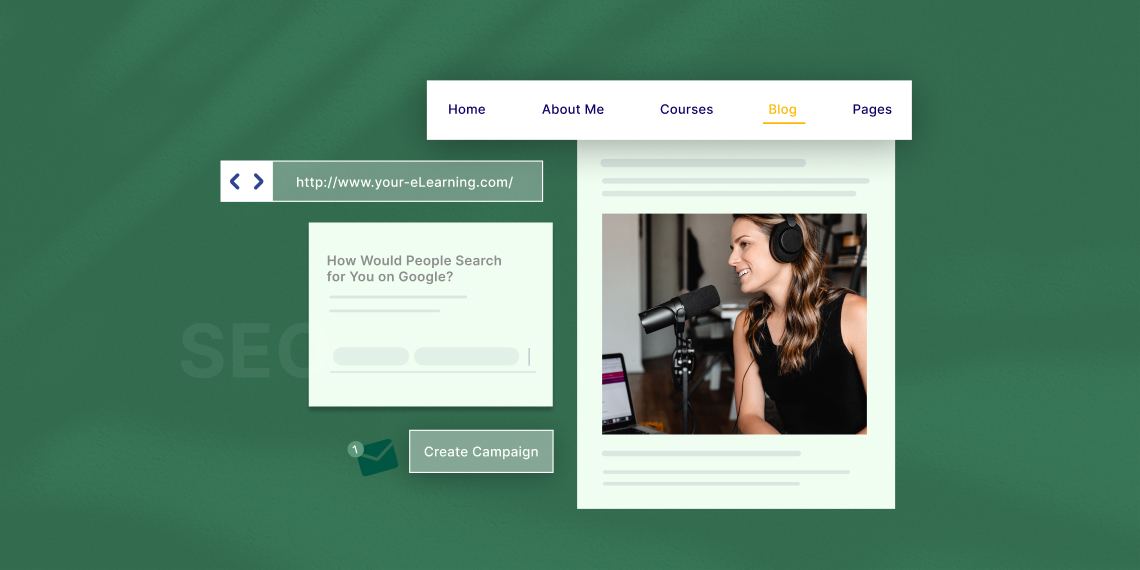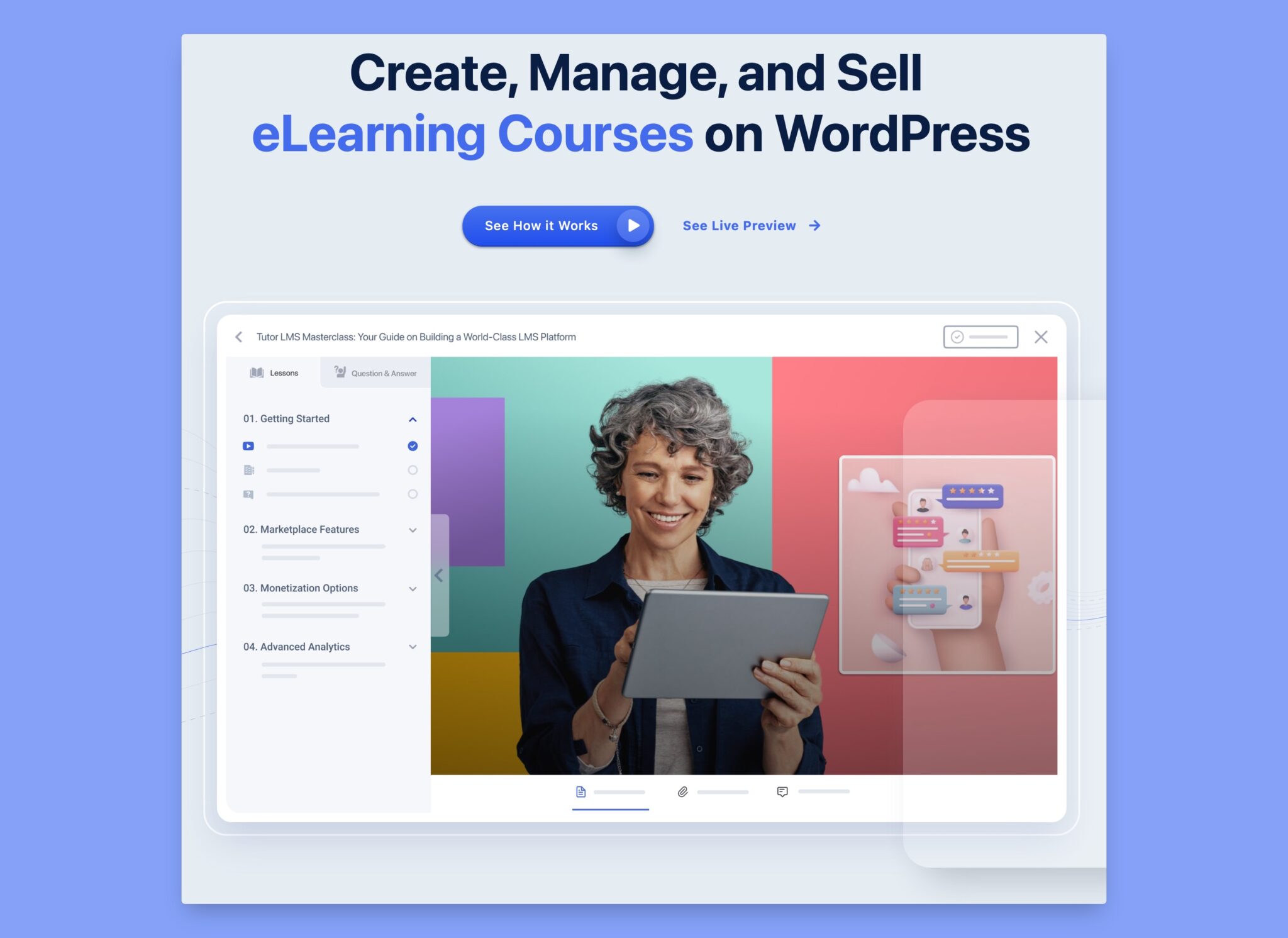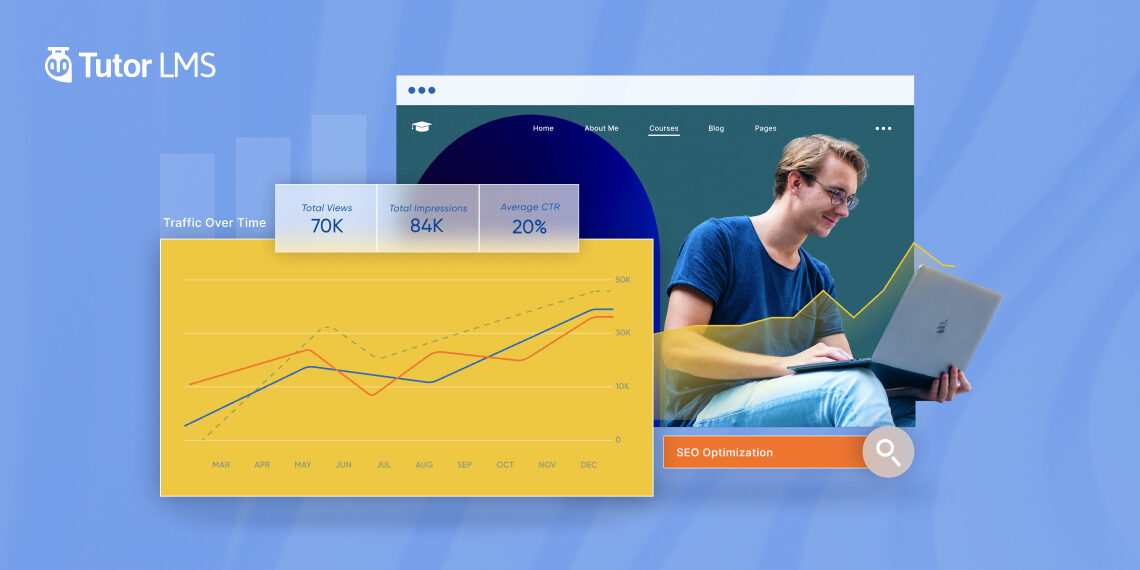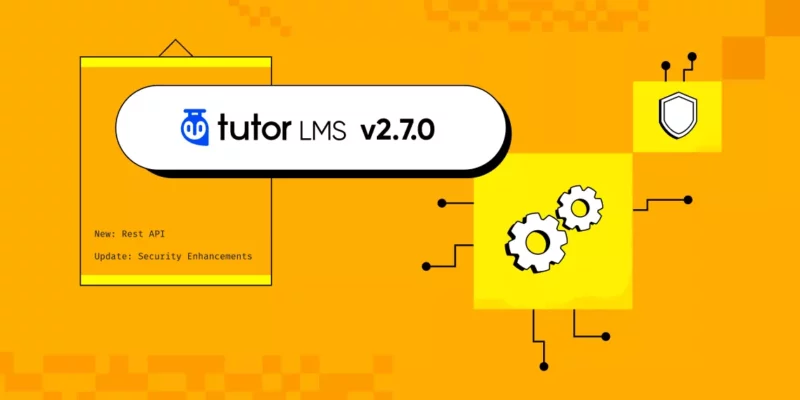Today’s eLearning market is incredibly competitive and vibrant. With so many new companies emerging daily, it is now more challenging to stand out and draw customer attention.
One might jump the gun, assuming the only way to obtain decent web traffic is to pay for ads. Now, paid advertising is a great way to drive more visitors to your website. However, organic traffic is the best source of traffic.
You’re in the right place if you’re looking to increase and learn more sustainable ways to generate organic traffic. Today, we will look at long-term sustainable strategies to secure a steady web traffic flow to your eLearning website.
Why is Traffic Important?

Before discussing strategies, we must understand web traffic and why it is essential for your eLearning website’s success.
Web traffic accounts for the number of users who have traveled to a particular website. It is important for many reasons. The more visitors you have, the number of potential customers also increases. Attracting more visitors also improves your brand awareness, generates more leads, and builds new relationships.
So it’s not difficult to see why traffic is essential for your eLearning website’s success. The problem is to understand how to grow quality traffic to your website. Not all traffic is good traffic. And in fact, unnecessary traffic can bog your business down at some level.
Practical Strategies to Promote Your eLearning Website
eLearning websites are an effective way to scale your business, but only if your target audience knows about your site. Attracting more web traffic isn’t always easy in a crowded marketplace. But we’ve got you covered. Listed below are four tried and true broad strategies to get your website traffic growing.
1. Create Engaging Content
Generating engagement is an age-old battle in the eLearning industry. The ultimate goal of learning is to keep our audience engaged. The learning process becomes more complex and dull without adequate engagement from learners.
So your eLearning site’s content has to grab prospective learners’ attention without overpromising. Creating content that connects with your learners makes learning simple, natural, and effortless.
So, how can you create engaging eLearning experiences?
Understand Your Target Audience
Knowing your target audience is essential as it lets you tailor your content to suit their needs. Once you understand the interest of your target audience, it feels more natural to create content that is more relevant and useful to them. Additionally, having a clear insight makes your marketing efforts towards them more effective.
Be Creative & Clear
With the amount of information freely available online, we all need to become more inventive with our content. Creativity inspires uniqueness and lets you stand out from the rest. Try to offer more viewpoints or at least a few unique ideas and thoughts that set you apart from others.
While creativity is encouraged, you must also accurately represent what you offer learners. Be straight with what your courses offer and what learners can hope to achieve from them. Also, mention any pre-requirements learners need to have to get the best out of a course. Satisfied customers lead to positive feedback, which will generate more sales.
Be User-Friendly
Try to keep content as user-friendly as possible. The key is to say more in a few words and use simple language as much as possible. To learn more about user-friendly content, check out our article here.
Add Relevant Links
Links are like an internal map that grows traffic by referring the audience to other relevant content. These links can be eLearning articles you’ve posted on your sites or guest posts on external platforms.
Make It Visually Attractive
Visually appealing content outperforms text in almost every situation. Use a combination of relevant images, videos, and interactive elements to keep learners more engaged.
2. Search Engine Optimization
It’s no secret that SEO is one of the best ways to drive traffic to your website. First-page search results in Google attract most of the search traffic. So when it comes to promoting your eLearning courses, SEO is likely the most rewarding.
Apart from general keyword optimization, several other factors determine your online content’s searchability. We have listed the important factors below:
Optimize Your Content With LSI and Long-Tail Keywords
LSI (Latent Semantic Indexing) keywords are words and phrases related to your target keyword. For instance, if you are writing about automobiles, then LSI keywords might be cars, road, engine, vehicle, and tires.
On the other hand, long-tail keywords are longer phrases with specific content. Long-tail keywords are search queries with low volumes but are used with the intent to purchase. So let’s say your target keyword is “meditation,” and your long-tail keyword may be “can meditation make you more intelligent.”
Overhaul & Upgrade Old Content
A great way to boost traffic is to upgrade your existing content. Always try and find outdated courses and update them as necessary. Improve existing content with better images, drop obsolete parts and introduce modern approaches.
Content Transformation
Content transformation is the process of transforming your content into another format. For instance, you can convert text-based courses into videos, ebooks, or audio content. It enables you to maximize content viewership by changing your medium of approach.
Image Optimization
Large unoptimized images will slow down your website and drive people away. Image optimization is about reducing the file size of your images as much as possible without sacrificing quality. It also improves image SEO and helps your images rank higher on search engines.
3. Content Marketing
Content marketing is the process of planning, developing, sharing, and publishing material to reach your target audience. When it comes to content marketing for your eLearning site, it can be challenging to know which type of strategy to use. There are a variety of content marketing types to choose from. So let’s look at some of the more effective types of content marketing for your eLearning site:
Social Media Content Marketing
There are over 4.7 billion social media users worldwide. It is easy to see why almost everyone engages in social media marketing.
The first step is building your presence on social networks like Facebook, Instagram, Pinterest, Twitter, and LinkedIn. Share about courses that you offer. Post about upcoming launches and keep your audiences engaged by asking questions, feedback, and hosting surveys.
Blog Content Marketing
Blogs can be very effective in attracting web traffic. It gives content creators great flexibility on topics and the point of discussion. Blogs allow you to debate hot industry issues and establish yourself as a thought leader. Your posts should aim to explain and solve problems that your customers commonly face.
You can also use a blog to promote other internal and external links, add social media share buttons and include your product information.
Video Content Marketing
Video marketing is a great tool to publicize your eLearning site and courses. To attract more customers, always aim to create videos to help explain your courses and their benefits. You can also post a few course videos as promotional videos to advertise your course offerings. Using popular video hosting sites like YouTube and Vimeo is highly encouraged.
Paid Promotions
Although we have mostly covered organic traffic in this article, paid advertisements can also be a quick and reliable way to reach a large audience. It’s a great way to push your eLearning content straight to your audience. Getting the best result from paid adverts requires much planning and optimization. SEO plays a massive role in the success of paid adverts. So make sure to follow the SEO steps mentioned above.
4. Offer User Support
Offering learners round-the-clock support may seem complicated and time-consuming at first. Few businesses have the resources to provide 24/7 customer support.
But, this can be dealt with in other, more creative ways. Creating community chatrooms and discussion boards on your website is the way to go. Fellow learners can collaborate and discuss issues. Learners who have completed the course can also help newcomers with their problems.
Also, creating discussion boards with questions and topics is a great way to ignite conversations and maintain high web traffic. It also provides learners with a more authentic learning atmosphere.
How To Get Started

Strategies are great, but it’s a whole other ordeal to get things started. Well, fret not. We have devised six simple steps that you can follow to implement your strategies.
Step 1: Create a Plan
Outline and prioritize all your objectives. This allows you to envision a path and measure your progress. Objectives are the heart of your project, and selecting the right ones can make or break your business. Try to establish goals that meet the SMART methodology:
- Specific
- Measurable
- Achievable
- Realistic
- Timed
Step 2: Research the Competiton
The eLearning market can be very competitive. But it’s the competition that drives innovation. To stay ahead in the contest, always be watchful of what the competition is doing in terms of content marketing. Try to learn which of their content is most popular, the content target market, and their publishing timeline.
Keeping an eye on your competition gives a better insight into the industry. You can learn from their mistake and use them as motivation to create better content.
Step 3: Establish an Editorial Calendar
Now that you have established a plan and gathered insight into the competition, it’s time to draw up an editorial calendar. An editorial calendar helps you consistently publish content and keeps things organized. It gives you a snapshot of all the content you plan to publish throughout the year.
The editorial calendar need not be perfect, as you can always make adjustments later. Planning a month or several months of content in advance gives you more flexibility to adapt to the competition and market changes.
Step 4: Get the Right Equipment
To ensure your content does not suffer from poor audio quality, bad lighting, or unsteady filming, it’s time to get the right set of tools. Now the choice of equipment will rely on your budget. But, with the incredible advancements in smartphones, there is no need to buy expensive cameras or recording equipment.
The main goal is to look and sound professional to keep our audiences interested. This necessarily does not require a large budget. Also, simple editing software can make your videos far more engaging.
Step 5: Get the Best LMS
An LMS is a software application that lets you create, design, organize, and deliver course content through a website. There are various advantages of incorporating an LMS over a simple eLearning site. Users can avoid the hassles of hosting, maintaining, and updating the platform. There are several LMSs available in the market, but choosing the right one can make or break your business.
We recommend Tutor LMS. It is one of the fastest-growing LMS platforms in the world right now. Tutor LMS lets you create engaging, challenging, interactive lessons, quizzes, and detailed reports.

Wrapping Up
Creating unique and helpful content for your eLearning site requires significant time and effort. This is why you must strive to attract as much traffic to your eLearning site as possible. As a result, you will be able to reap the benefits of your hard work.
We hope this article has helped you better understand how to attract more web traffic to your eLearning website. Feel free to leave a comment below, and remember to have a wonderful and productive day.



